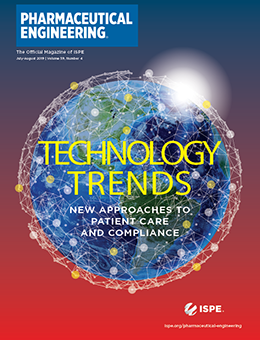
Downloads
Improving Pharmaceutical Connections with Patients
Cover: Delivering pharmaceutical solutions to patients may be more effective with new developments in digital delivery and tracking. This follow-up on a presentation at the 2018 ISPE Annual Meeting & Expo explores some trending solutions.
Application of the Soc 2+ Process to Assessment of Gxp Suppliers of It Services
Feature: To facilitate the assessment and mitigation of compliance risks associated with a third-party service organization, its services, and the systems used to provide the services, this article proposes adopting an approach from the financial sector that, with a little modification, could be used to assess suppliers of GxP-regulated IT services.
The Digital Twin: Creating Efficiencies in a Virtual World
Feature: This article on the digital twin (a virtual replica of a physical entity) launches an ongoing series from the Pharma 4.0 Special Interest Group focusing on key technologies that will modernize pharmaceutical manufacturing and facilitate digital transformation. Pharmaceutical companies use the digital twin to create and model manufacturing processes and enable analysis of how a drug will work inside the human body.
2019 ISPE Aseptic Conference: Interactive Regulatory Panel Addresses Multiple Aseptic Issues
Feature: A group of US FDA panelists responded to a range of questions from 2019 ISPE Aseptic Conference attendees on topics from restricted access barrier systems to smoke studies and artifi cial intelligence.
Accelerated Pharmaceutical Product Development, Registration, Commercialization, and Life Cycle CMC Lessons, Part 1
Feature: This article, the first of a two-part series, looks at challenges that chemistry, manufacturing, and control (CMC) development teams may encounter when a project is given accelerated development status. Key considerations and themes are introduced and future opportunities are explored.